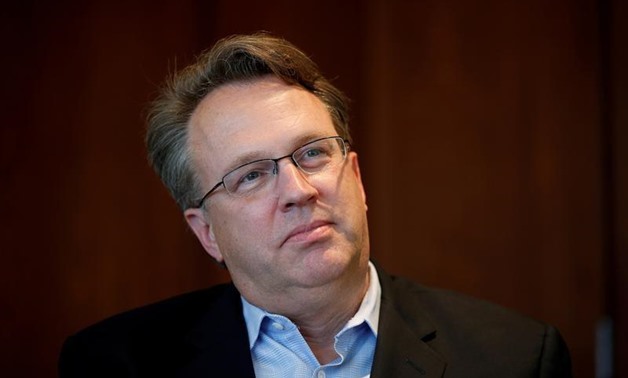
San Francisco Federal Reserve President John Williams speaks to Reuters in San Francisco, California, U.S. on September 27, 2016. REUTERS/Stephen Lam
BERKELEY, Calif. - 19 November 2017: Economists presenting at a conference earlier this week blew through the organizers’ four-slides-per-speaker limit, and the host, San Francisco Fed President John Williams, vowed to take action.
“I am going to try, over the rest of my time at the Fed, to undo that damage by not showing any slides,” he said on Saturday at a separate conference at the University of California, Berkeley.
His joke elicited chuckles from the audience of scholars who had suffered through an immense number of equation-packed slides at the San Francisco Fed’s just-concluded conference.
By paying for that excess with a promise not to show any slides himself, Williams said, he hoped to ultimately bring the total number back in line with the original limit.
The approach neatly illustrates the logic behind a bold and nearly untried monetary policy idea that Williams has lately embraced.
The idea, known as price-level targeting, calls for a central bank to make up for bouts of low inflation by encouraging high inflation later on.
It differs from the Fed’s current approach of targeting inflation at 2 percent while taking a position of “let bygones be bygones” to past periods when it is above or below that level.
Williams, Chicago Fed President Charles Evans and former Fed Chair Ben Bernanke have in recent months championed price-level targeting as a way to give central banks more scope to combat a severe downturn when merely cutting interest rates is not enough.
If people believe the central bank will stick to this policy, they will try to spend what they can during a downturn, before their money’s value is eroded by future inflation. That spending will itself pull the economy from recession faster, shortening any future period of high inflation induced by the central bank.
If such a policy were put in place now, the Fed would need to allow inflation to run at 3 percent, about twice as high as it is today, for about the next five years.
But the idea that the Fed would subject Americans to such a paycheck-draining policy strains belief, critics say.
“I find that quite implausible,” former Minneapolis Fed President Narayana Kocherlakota said earlier this week.
One economist at the Saturday conference said: “We’d probably bail on the policy halfway through.”
Williams completed his 15-minute talk there without showing a single slide. It remains to be seen whether he will stick to his policy in the 10 years before he reaches the Fed’s mandatory retirement age.

Comments
Leave a Comment